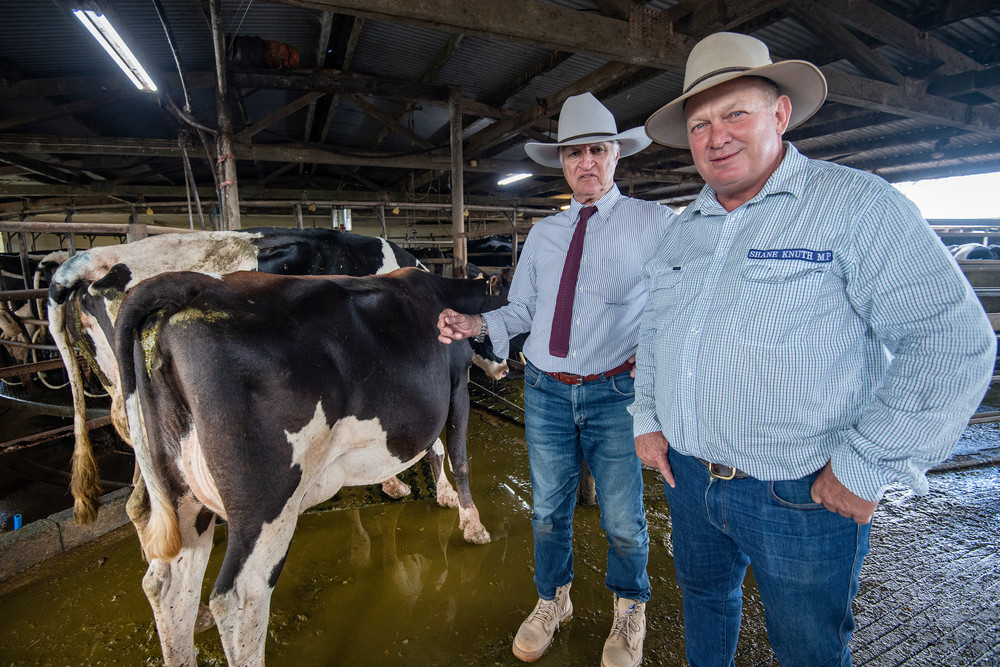On The Land
12 May, 2022
Watershed time for dairy industry
EAST Aus Milk councillor and fourth generation dairy farmer James Geraghty has foreshadowed a watershed announcement ahead for tableland farmers and drawn attention to the acute milk shortage that is currently gripping Queensland in a response to Member for Hill Shane Knuth’s recent remarks about the industry.

EAST Aus Milk councillor and fourth generation dairy farmer James Geraghty has foreshadowed a watershed announcement ahead for Tableland farmers and drawn attention to the acute milk shortage that is currently gripping Queensland in a response to Member for Hill Shane Knuth’s recent remarks about the industry.
Mr Knuth has hit out at Federal Agriculture Minister David Littleproud’s recent comments in which he blamed drought and supermarkets for the drastic decline in dairy farm numbers. Prior to deregulation in 2000, there were over 268 dairy farmers on the Tablelands but this number has shrunk to 48.
Mr Knuth said it was an LNP Federal Government who deregulated the dairy industry in 2000 and handed complete power and control to processors and major supermarkets. He said while those factors played a huge part in the decline of the industry, particularly through the dollar a litre milk war era, both the Federal and State Governments stood by and allowed this to happen.
“It’s a bit disingenuous for the Federal Agriculture Minister to deflect and lay blame on others, while the Federal Government has stood by for the last two decades. For years, Bob Katter and I have been warning both governments that we needed to improve legislation to give dairy farmers a better price for their milk.”
Mr Geraghty said while they were always grateful for Mr Knuth’s support, he was focused on the issues around the milk shortage being experienced at the moment.
“Why is there discounted milk on Woolworths shelves in the middle of a milk shortage? Why are there cheaper lines of milk sitting beside a notice listing the numerous dairy products unavailable to customers because of that shortage right now?” he asked. “Queensland is currently trucking 500,000 litres of milk per day in from New South Wales to address our supply shortages and New South Wales have been relying on Victorian farmers to top them up. Now Victoria is boating milk in from Tasmania to ensure they have enough to supply their customers.”
Australians consume 9 billion litres of milk annually and domestic production has declined from 11.27 billion litres in 2002 to 8.7 billion litres in 2019.
“Our milk price has lifted to $1.30 per litre, but we are looking for an increase on that figure when Bega delivers its 1 June announcement on the 2022 price they will pay our farmers,” he said. “We are happy to be supplying Bega, an Australian owned company, that wants as much milk as we can produce and wants to grow our market. Bega have been saying all the right things, but this is a watershed point in the history of our industry.”
Mr Geraghty said when deregulation occurred in 2000, the price for market milk dropped 17c/ litre overnight and continued its downward spiral in the years that followed.
“If June’s price isn’t high enough, remaining dairy farmers will be sitting down around kitchen tables across the region and making decisions as a family about their farming futures. “You can’t just stop dairying, but those decisions will manifest over the next 3-5 years as farmers dispose of dairy herds and convert to beef or sell their properties altogether. “But until we see dairies being sold to purchasers who intend to continue to run them as dairies and even the beginning of farmers buying beef properties to convert them back to dairies, we will know the milk price on offer isn’t sufficient for dairying to stack up as a business.”


